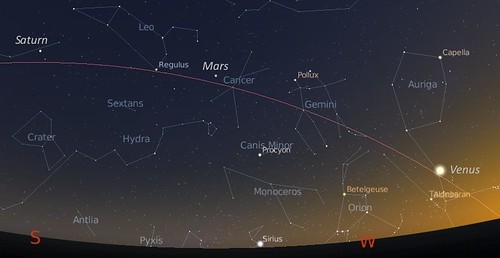Now is a great time to feel that you are part of the solar system. Venus, Mars, Saturn and the Moon are all visible in the evening sky. As you can see in the photograph I took a few nights ago (below), all the planets lie along a line called the ecliptic, which goes to show just how flat our solar system is. (Just hover your mouse over the image for labels)

Our solar system is like a big flat pancake! Imagine the Earth sitting on that pancake, along with the rest of the planets. The grid marks where that pancake (the flat plane of our solar system) goes out into space, and so where all the planets can be found. The constellations of Leo (top left) and Gemini (bottom right) are also shown.
The following animation shows just how it looks from the ground and from above the solar system.
